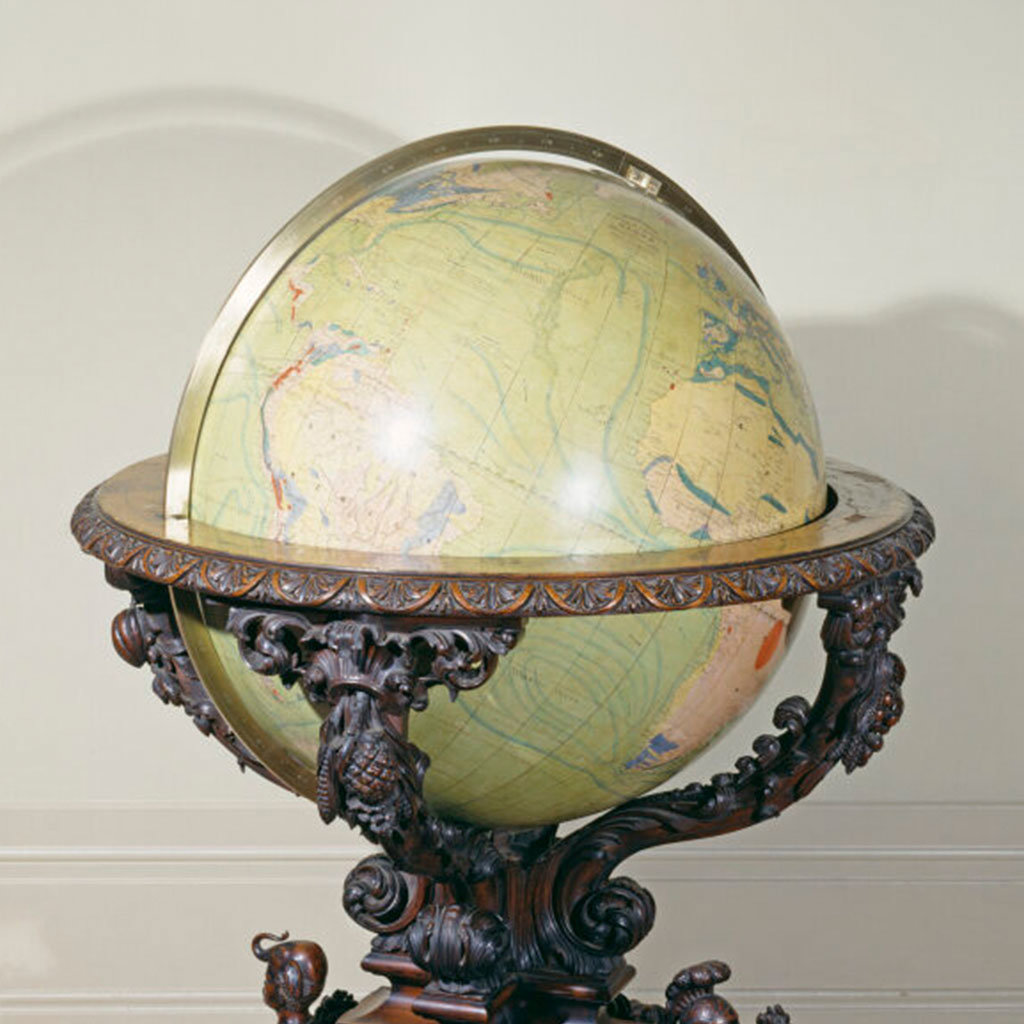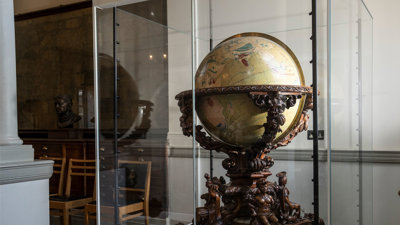The Johnston globe is the first of its kind and, at 30 inches in diameter, shows not only the topography of the world, but also its geology, hydrology, and meteorology. Its maker, Alexander Keith Johnston (1804-1871), was a renowned geographer, cartographer, and active member of the Society.
Johnston was a skilled engraver with a special interest in physical geography. Through his publications, which included popular atlases, he encouraged the teaching of physical geography in British schools and universities.
Johnston's globe wins gold
Johnston's geological and physical globe shows the structure of the Earth's currents of the ocean and the lines of equal temperature. The globe was displayed at the Great Exhibition of 1851, where it won a gold medal for its ingenuity.
The stand, which has a compass built into its centre and shows the continents of Africa, America, Asia, and Europe portrayed as women – a common trope in maps since the 16th century, was also recognised for its grandeur and detail.

Johnston and the Society
Just before his death, in 1871, Johnston was awarded the Society’s Patron’s Medal for his contributions to geographic education and publication.
His son, also called Alexander, became a Fellow at the young age of 24 and served as the Society’s map curator. He later died on a Society expedition to Lake Nyasa.
Further readings
Sumira, Sylvia. The Art and History of Globes. London: British Library Publishing Division, 2014.
Horowitz, Maryanne Cline and Louise Arrizoli. Bodies and Maps: Early Modern Personifications of the Continents. Leiden: Brill, 2020.
Young, Paul. Globalization and the Great Exhibition: The Victorian New World Order. London: Palgrave Macmillan, 2009.
